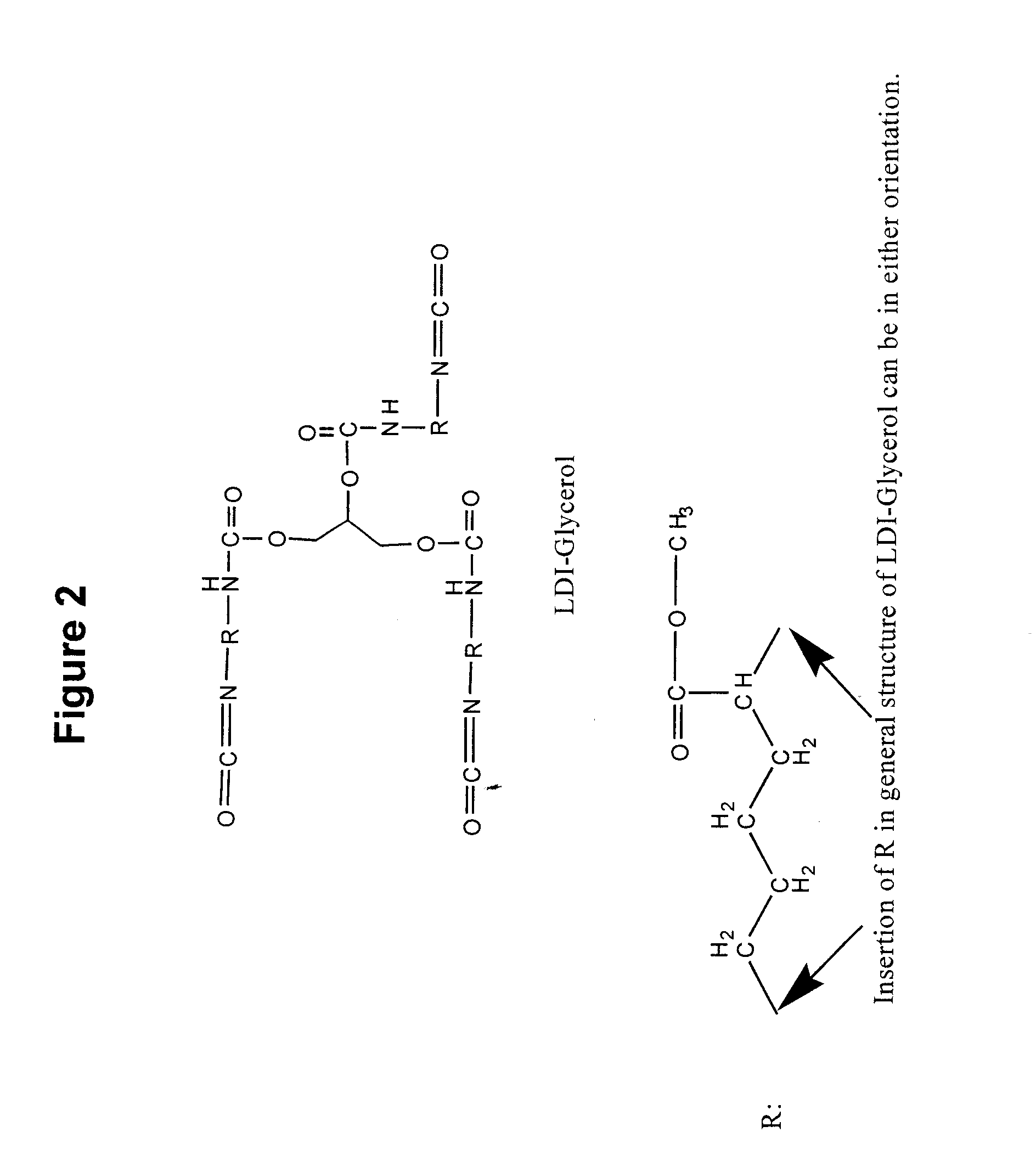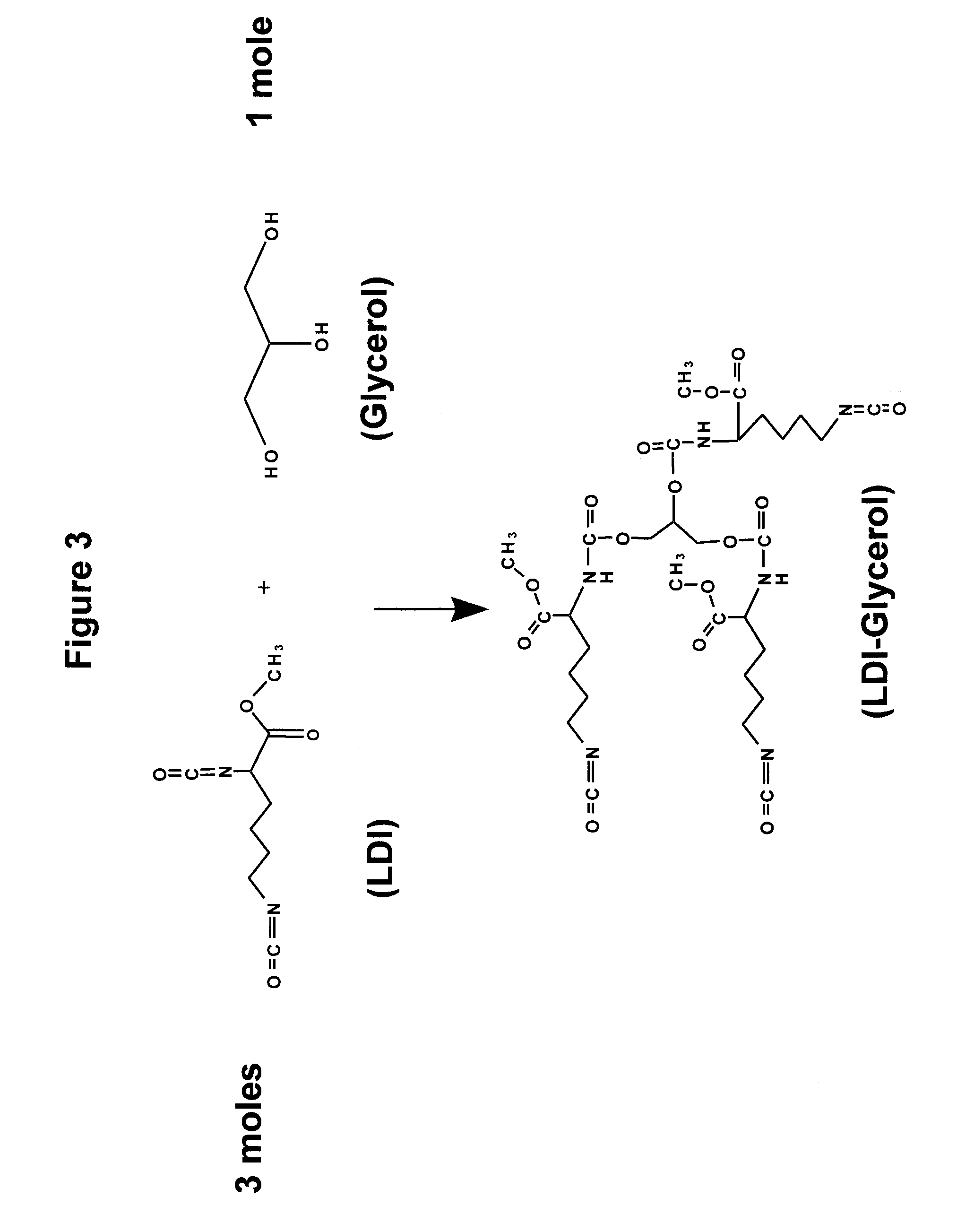Anti-no-reflow guide wire for vascular interventional procedures
a technology of vascular intervention and guide wire, which is applied in the direction of dilators, organic chemistry, surgery, etc., can solve the problems of distal vessel, major morbidity and mortality, and vascular disease that is a major cause of morbidity and mortality, and achieves the effect of improving vascular outcomes and improving vascular outcomes
- Summary
- Abstract
- Description
- Claims
- Application Information
AI Technical Summary
Benefits of technology
Problems solved by technology
Method used
Image
Examples
example 1
[0119]Polyurea coatings technology is a recent development in the polyurethane coatings industry. Polyurethane chemistry has existed for approximately 60 years, while elastomeric urethane coatings have been available since the 1970s. Polyurea elastomer technology was introduced some 10 years later.
[0120]Isocyanates are the fundamental starting materials for the synthesis of polyurethanes. The isocyanate group is very reactive towards “active” hydrogens from water, alcohols and amines. Isocyanate terminated pre-polymer polymerizes rapidly in the presence of active hydrogen donor compounds. This capability of rapid polymerization has evoked considerable interest in isocyanates and their use in medical applications. Some researchers have even developed a urethane pre-polymer as a tissue adhesive (see e.g., Matsuda et al., ASAIO Trans. 35:381 (1989)). However, commercial isocyanates are toxic due to their degradation products such as aromatic diamines.
[0121]Recently, a new generation of...
example 2
[0127]The purpose of the experiment described under Example 2 was to determine whether the polymer of adenosine, lysine methyl ester and glycerol synthesized in Example 1 with adenosine molecules covalently-linked to the polymer (as described in Example 1) could release adenosine rapidly and for a duration of time required for a typical vascular procedure when the adenosine-containing polymer is coated onto a wire (as described in Example 1) and when the wire is in a physiological salt solution at body temperature and pH to mimic the in vivo environment.
[0128]One end of a section of Tygon roller pump tubing (Harvard Apparatus; Holliston, Mass.) was placed in a reservoir containing 10-ml of phosphate-buffered saline (PBS) and the pump tubing was inserted into a digital roller pump (model ISM834A, Ismatec; Glattbrug-Zurich, Switzerland). The other end of the pump tubing was attached to a short section of polyethylene-50 tubing and the end of this tubing was placed in the same reservoi...
example 3
[0130]The purpose of the experiment described under Example 3 was to determine whether the polymer with adenosine molecules covalently-linked to the polymer (as described in Example 1) could release adenosine in pharmacologically-active amounts that counteract the no-reflow phenomenon when the adenosine-containing polymer is coated onto a wire and when the wire is placed in an artery in vivo with blood flowing through the artery. Adult Sprague-Dawley rats were anesthetized with Inactin (90 mg / kg, intraperitoneal injection) and placed on a Deltaphase Isothermal Pad (Braintree Scientific, Inc.; Braintree, Mass.). Body temperature was monitored with a digital rectal probe thermometer (Physiotemp Instruments, Inc.; Clifton, N.J.) and maintained at 37 degrees C. by adjusting a heat lamp above the animal. A polyethylene-240 cannula was inserted into the trachea to facilitate respiration, and a polyethylene-50 cannula was inserted into the carotid artery to monitor arterial blood pressure ...
PUM
| Property | Measurement | Unit |
|---|---|---|
| pressure | aaaaa | aaaaa |
| diameter | aaaaa | aaaaa |
| length | aaaaa | aaaaa |
Abstract
Description
Claims
Application Information
 Login to View More
Login to View More - R&D
- Intellectual Property
- Life Sciences
- Materials
- Tech Scout
- Unparalleled Data Quality
- Higher Quality Content
- 60% Fewer Hallucinations
Browse by: Latest US Patents, China's latest patents, Technical Efficacy Thesaurus, Application Domain, Technology Topic, Popular Technical Reports.
© 2025 PatSnap. All rights reserved.Legal|Privacy policy|Modern Slavery Act Transparency Statement|Sitemap|About US| Contact US: help@patsnap.com



